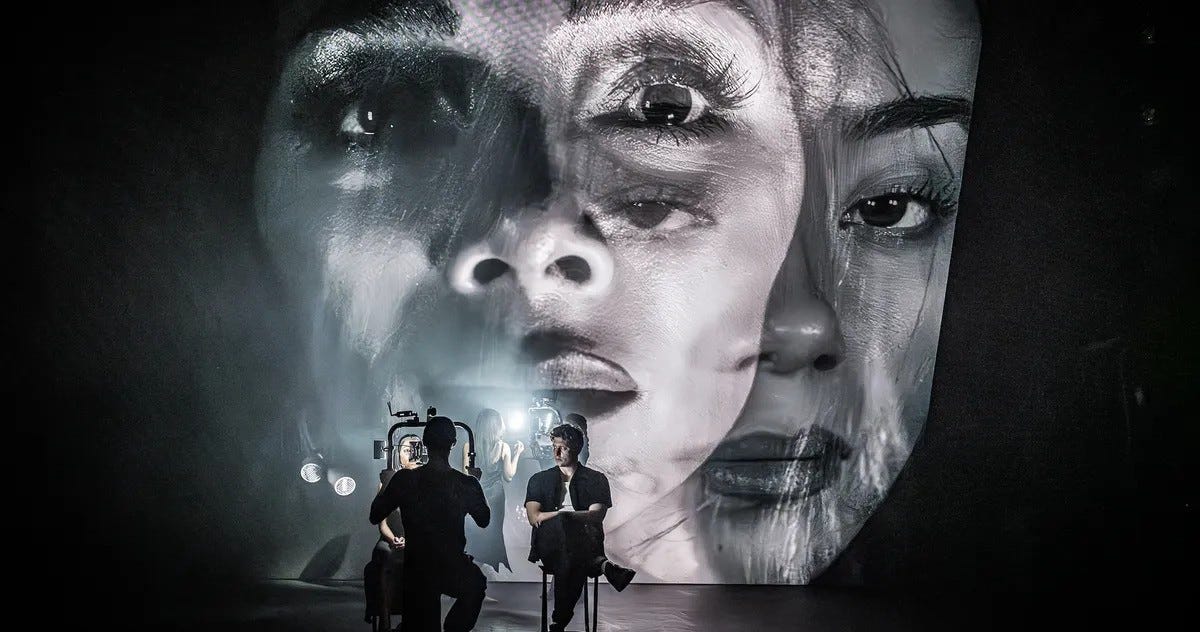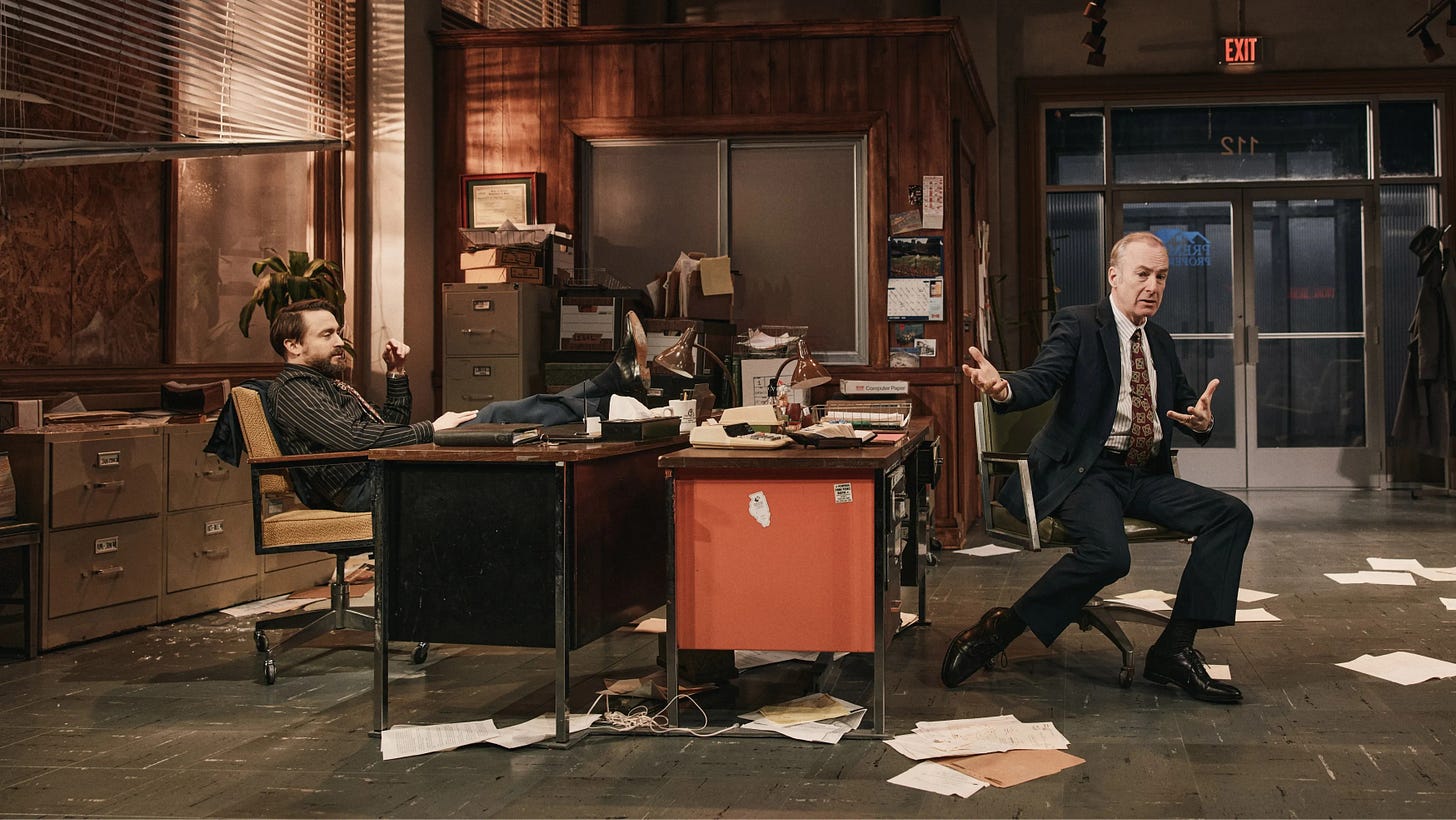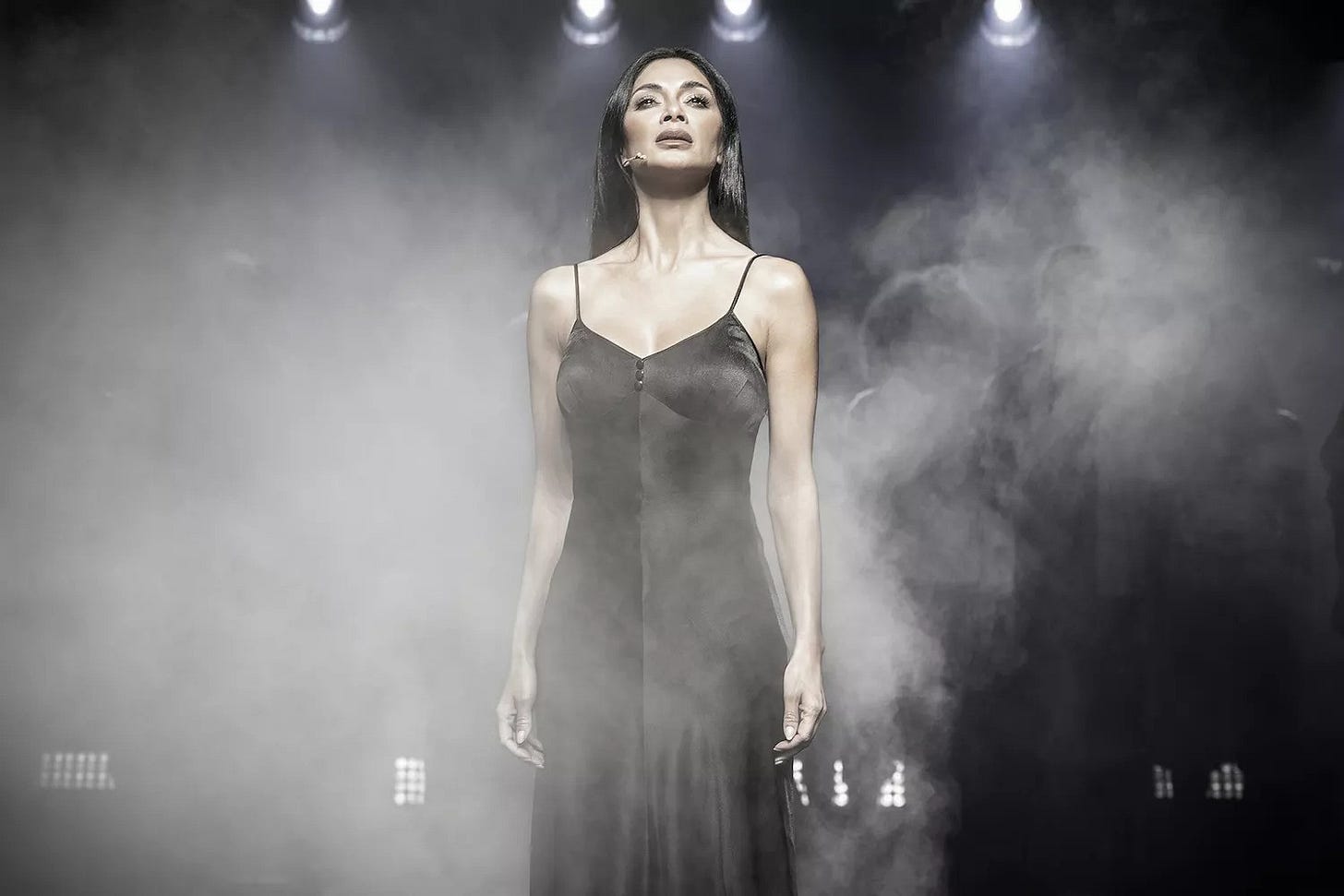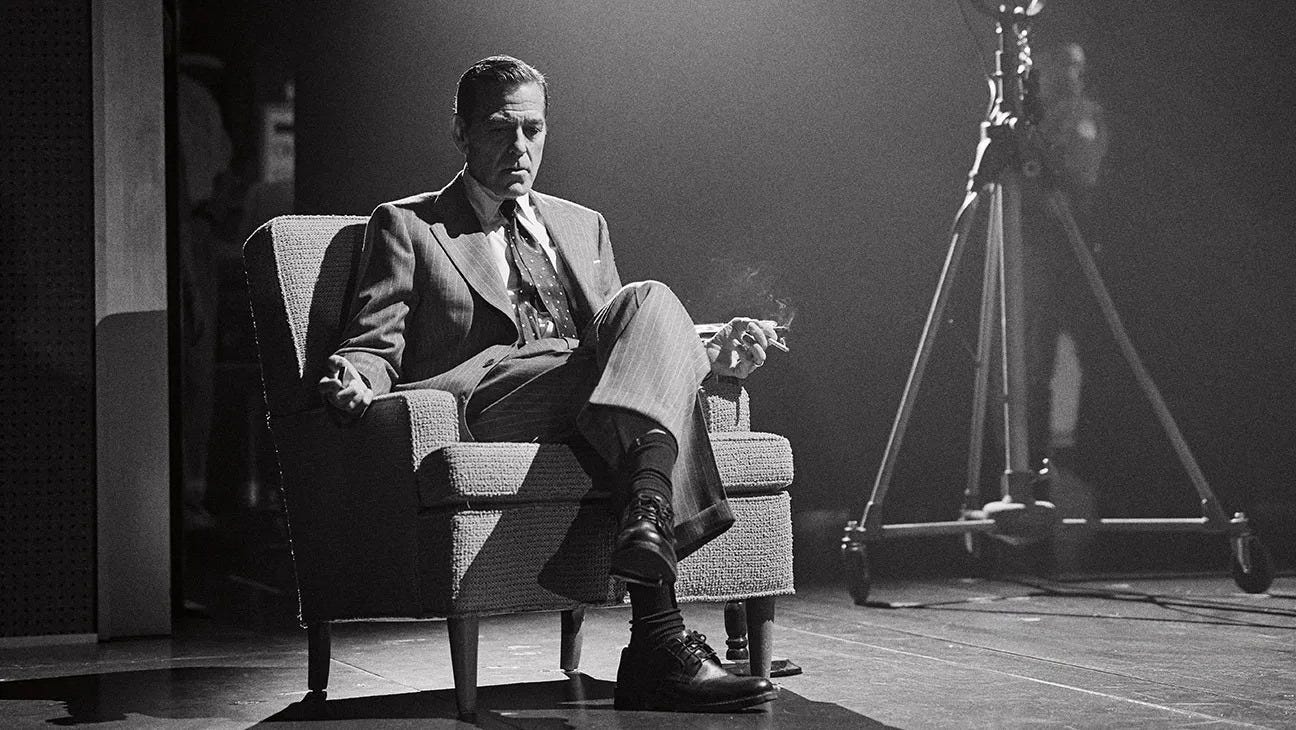Here’s the thing: I never intended for this to be an ongoing series. But if Broadway is going to keep translating films to stage, I am going to feel inspired—nay, obligated—to keep breaking down the options this way. (Also, just for a peek behind the curtain, since theater outlets don’t generally want to pay me to write reviews, I’ve been focusing on freelance work that helps me afford my out-of-pocket health insurance, so this is a great way to cover more of a season I’ve been neglecting.)
Perhaps I’ve softened a bit in my old age (I was a whole year younger when I last did this), but I feel a little less reflexively opposed to the idea of adapting movies into plays and musicals now. In part, that’s because there’s been some more thought put into it this season: bigger swings, more nuanced productions, scores that don’t feel like ChatGPT was asked to write songs for a musical adaptation of The Sixth Sense. (I would 1000 percent see that. Picture Caissie Levy as Lynn, earning a Tony for her breathtaking 11 o’clock number “Do I Make Her Proud?”) I certainly don’t like all the adaptations on Broadway this season, but I can at least appreciate that an attempt was made, and I’ve tried to judge them accordingly.
For this installment (spoiler alert: not my last), I’m broadening my parameters for inclusion, because it was impossible to ignore the big movie-turned-play this season. Also I decided to add another play that started as a play but that has a well known movie, which would only be cheating if I weren’t the one making the rules. You have to be flexible sometimes, like when you’re trying to cover a lot of material based on your own silly rubrics. Thank you for your understanding, and for not unsubscribing. But also this is a free newsletter with very infrequent updates, so truly, go with god.
Note: I am always in favor of seeing live theater. I also love movies, but they are no substitute for the theatrical experience—whether they’re a pro-shot, an adaptation of a stage musical, or the inspiration for a play. This “movie or musical?” exercise is simply a way of trying to organize my thoughts about the abundance of theater options, and should only be taken as seriously as you feel like taking it. (This is the same note I include every time, and I always mean it!)
Sunset Boulevard

I first saw Andrew Lloyd Webber’s Sunset Boulevard when Glenn Close did it for the second time (or I guess third, if you count LA, and we all know Patti does). I thought it was pretty terrible! I enjoy ALW shows, particularly when they’re frozen in the ‘80s like Phantom of the Opera or thrillingly reinterpreted like Cats: The Jellicle Ball. But Sunset Boulevard takes a quite literally perfect film and adds utterly forgettable songs—minus two of his best, “With One Look” and “As If We Never Said Goodbye,” and I guess also the title song, though in my head the lyrics remain, “Sunset Boulevard, schmunset schmoulevard,” which I don’t think is right.
The current and much-lauded production on Broadway is not Andrew Lloyd Webber’s Sunset Boulevard, however. This is Jamie Lloyd’s Sunset Boulevard, a bold new interpretation of the material that audiences went apeshit for in London and that seemed at one point guaranteed to earn star Nicole Scherzinger a Tony once the show transferred to Broadway. (I think Audra has the momentum now, and not because Scherzy asked Russell Brand where to get a “MAKE JESUS FIRST AGAIN” hat.) This Sunset is severe and stripped down, with a Norma who is less fading silent film star and more fallen pop diva. There is a lot of blood at the end (Daniel Fish’s Oklahoma! should sue). And there are screens everywhere, with cameras following cast members onstage and off—Tom Francis sings “Sunset Boulevard” on the street outside, which is mostly fun for the way looky-loo tourists are inevitably shoved—and Scherzinger getting close-up after close-up, long before the arrival of Mr. DeMille.
Unfortunately, I hate screens. I hate them for the way they have supplanted traditional Broadway sets, but I hate them more for the way they often look like shit. Most of all, I hate the way they make me feel like the director should have just made a movie, and that’s truer than ever in Sunset Boulevard, which was famously already a movie. The production includes film-style credits, something that offends me to my core. I could look past my internal biases if I felt like this Sunset amounted to anything, but I find it hollow, a collection of ideas (some of them good!) that are too dramaturgically muddled to cohere. Even Scherzinger, who is objectively strong in the role, can’t overcome characterization that lacks the clarity of Billy Wilder’s vision. The musical has never been for me, so perhaps it’s not surprising that even a radical new approach would be unappealing. Still, I wish I saw what others do here.
Movie or musical: It’s not a fair fight, as far as I’m concerned. One of the most remarkable things about the movie Sunset Boulevard is that it’s 75 years old and still feels startlingly modern. You have to have a really good reason for adapting and updating it, and I simply don’t see one in the current iteration of the musical.
Good Night, and Good Luck
It took me 20 years to watch the movie Good Night, and Good Luck, which I finally rented in advance of seeing the play. I was so impressed by David Strathairn’s performance, George Clooney and Grant Heslov’s script, Robert Elswit’s stunning black-and-white cinematography—and even more dubious about the necessity of putting it onstage. These very literal film-to-play adaptations have irked me ever since I saw Ivo van Hove’s wildly overrated Network. In many ways, it goes back to my feelings about an overuse of screens. If you want to make a movie, make a movie. Let films be films!
Here’s the thing, though: I loved the play version of Good Night, and Good Luck, which doesn’t do anything radically different from the movie in terms of content. The staging, however, is innovative and immersive. As much as I love the look of the movie, I realized there was something meaningful about seeing this story in color. Black-and-white can be distancing—it’s an aesthetic we associate with the past for obvious reasons, and when it is used now, it’s almost always to evoke a different era. In full color, the play wants us to see its story as something impossibly current. Anyone paying even passing attention to the news can see the way the story of HUAC, government censorship, and media complicity remains painfully relevant, but telling that story in color and live onstage drives it home with more urgency.
And look, does Good Night, and Good Luck need to make that even more obvious with a montage of decades of news coverage since Murrow’s death, culminating in Elon Musk’s fascist salute? Maybe not, but there’s a real catharsis in hearing an entire theater audience boo that shit. Even if Clooney’s performance isn’t as polished as Strathairn’s, he’s the exact person I want so-called liberal cringe from right now. Broadway prides itself on being progressive, but a look at the political donations of some top producers muddles that somewhat. I’m always glad to see a piece of work that’s as focused and righteously angry as this play is—that more than justifies its existence.
Movie or play: This is so clearly a “both” situation for me, and a great reminder of what these different mediums can bring to the table. I can’t promise to not be a hater about movie-to-play adaptations going forward, but I’ll try to keep a slightly more open mind.
Glengarry Glen Ross

I know, I know. But I warned you that I was bending the rules here. Yes, Glengarry Glen Ross began its life as a David Mamet play, with the original Broadway production earning Joe Mantegna a Tony for his performance as Ricky Roma. I’d just argue that people are probably more familiar with the 1992 film, which added the scene for Alec Baldwin that gave us “coffee’s for closers.” Arguably the line most associated with Glengarry Glen Ross, and it’s not in the play at all! The movie also got Al Pacino a well-deserved Oscar nod for playing Roma, and Jack Lemmon’s indelible performance as Shelley Levene inspired two characters on The Simpsons. Now that’s impact.
I was looking forward to the play because the movie is good enough to overcome my feelings about David Mamet, and the cast of the current Broadway production is a murderer’s row of guys I like, including Kieran Culkin, Bob Odenkirk, Bill Burr, and Michael McKean. Now having seen it, my hot take is that it’s pretty good. The play is a tight and effective piece of work, and with a strong cast, it’s hard to fuck up. I haven’t seen any other productions, so I can’t say for certain that this one doesn’t do anything different, but it’s quite straightforward. And that’s fine—I don’t think Glengarry Glen Ross needs to be high-concept.
All that being said, there are reasons it never moves past pretty good. Chief among them is a miscast Culkin, whom I really do love, but who reads as too young for the part. He’s not too young! I’m pretty sure he’s the exact same age as Cannavale was during the last production. But especially in the context of this cast, he feels out of place, and he’s never all that convincing as the ruthless smooth talker Roma is supposed to be. This is a role that has netted two Tony Awards and an Oscar nod, and Culkin notably wasn’t even nommed. Beyond that, the direction is maybe too tight—the conclusion feels rushed in a way that undercuts the gut punch of its final moments, leaving me a little cold.
Movie or play: I don’t regret seeing the current Broadway production, mostly for Odenkirk and Burr, who are both so good. At the same time, the movie is the better version in almost every way, and significantly less expensive to rent than snagging a ticket to the play.



